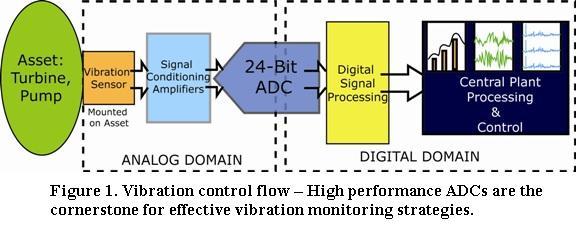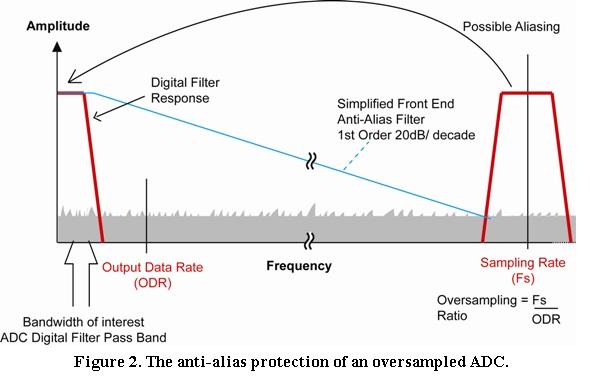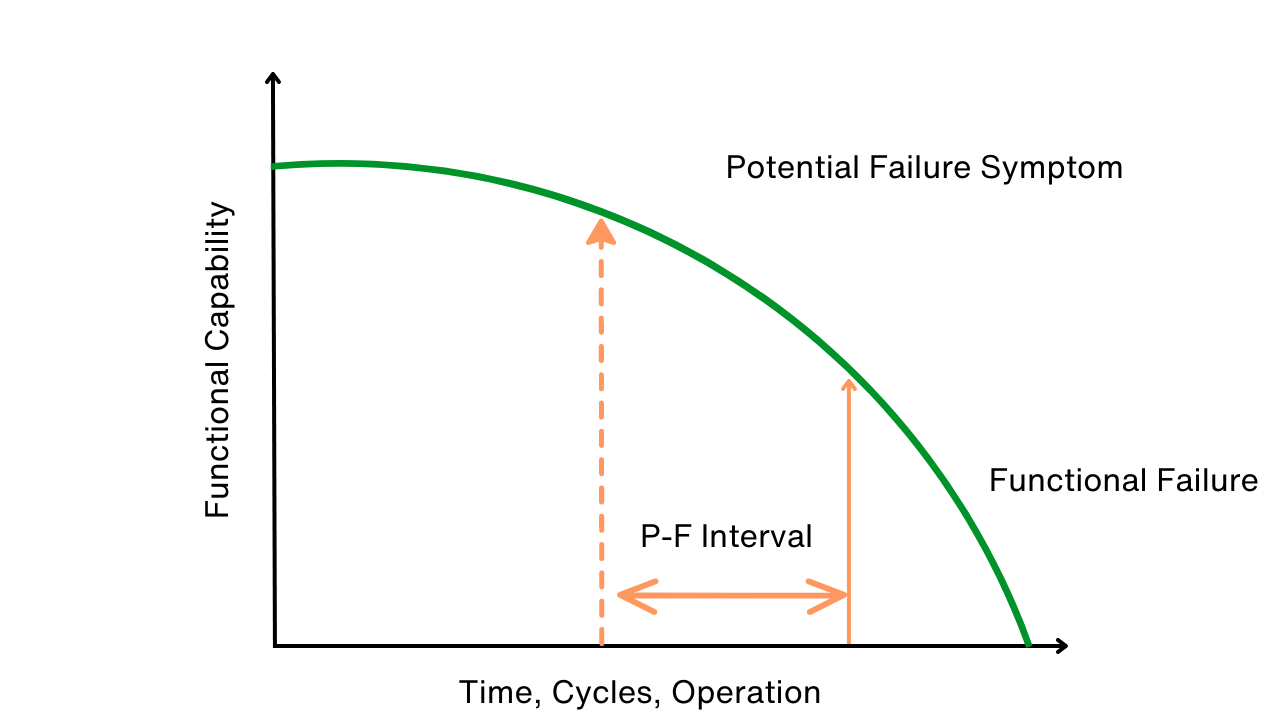Vibration Analysis Using ADCs Keeps Industrial Equipment Working
Michael Clifford
Monitoring the condition of large industrial machinery provides long term benefits in terms of lower production cost, reduced equipment down time, improved reliability, and increased safety. Industrial manufacturers face a constant battle in keeping production equipment operational. Ensuring that all of the key elements of the process are in good working order allows them to standardize costs, ensure consistent output of the end product, and reduce the risk of delivery delay to their customers. One common way of controlling the state-of-health of a piece of equipment is to monitor its vibration signature. High quality data is required, so using high-resolution analog-to-digital converters (ADCs) to acquire and digitize the analog vibration signal is a key enabler to the arena of predictive maintenance.
Predictive Maintenance is Important
Typical components of many large industrial processes include turbines, engines, cooling towers, condensers, and pumps. These extremely valuable capital assets are worth protecting. Using vibration analysis as the core of a predictive maintenance process allows industrial plants to schedule preventive maintenance in advance of equipment breakdown, thus avoiding the cost of process breakdown. Reducing the cost of repairing or replacing large capital assets makes predictive maintenance regimes essential.
The intensity of condition monitoring is typically linked to the cost and importance of the asset to the organization or process. Monitoring frequency can be split into three regions: continuous monitoring, diagnostic monitoring, and trending. For example, the main gas turbine of an electricity generating station is critically important and entails an enormous capital investment. This critical asset will be monitored continuously so it can be shut down in the event of a catastrophic failure anywhere in the system. It will also undergo diagnostic analysis so that maintenance can be scheduled for a time that suits production demands.
Supporting assets such as pumps or condensers may not be as critical, and are certainly secondary in terms of importance and cost. These assets may only be monitored periodically. Periodic monitoring, or trending, allows tracking of the performance at chosen time intervals.
Vibration Monitoring – The Key to Effective Predictive Maintenance
While rotating, the shafts and bearings of industrial turbines, motors, and other machinery will vibrate. The characteristic frequency of this vibration depends on the speed of the machine, its structure, and the material of which it is composed. When aligned and working optimally, these machines will produce typical vibration characteristics, or good vibrations.
If a bearing or other part of the asset starts to wear, the optimal rotation and alignment of the machine will deteriorate. The short-term effect is sub-optimal performance. Allowing the asset to operate in a long-term stressed state could lead to breakdown, but a cracked bearing or worn shaft can be identified by looking at the vibration signature of the machine well in advance of breakdown. As the characteristic signature changes, wear can be detected, and maintenance can be performed. Vibration monitoring is thus a key component of successful predictive maintenance systems.
Digitizing the vibration and analyzing its signature is important to automatic identification of a component that may have to be repaired or replaced. A combination of vibration sensors, operational amplifiers, and precision ADCs are used to characterize the vibration. This information provides a direct time domain representation of the asset’s vibration. Further processing using Fast Fourier Transforms (FFT) shows vibration in the frequency domain. Maintenance engineers examine this information to diagnose operating problems. A change in the amplitude or fundamental frequency, or increased harmonic distortion or other spurious frequency components can all indicate machinery component wear or failure potential.

ADC Selection – Digitizing the Analog Vibration Output
The vibration sensor outputs a continuous analog voltage that must be buffered, filtered to remove broadband noise, and scaled to match the input of the ADC. Effective digitization of the vibration sensor output requires a high-performance, high-resolution, wideband analog-to-digital converter. The vibration sensor outputs information of importance in both its AC and DC values. The AC content, typically spread over a DC to 20 kHz bandwidth, can extend up to 40 kHz or even 100 kHz depending upon the sensor, the equipment being monitored, and the required high-order harmonic content. The AC content rides on an underlying DC component that also contains important information. The DC component of vibration proximity sensors, for example, gives information on the alignment of a rotating shaft. Misalignment or effects of heat can lead to an altered shaft rotation being that can be detected up by the vibration sensor.
Dynamic Range and Protecting Against Aliasing
The combined effects of the varying AC amplitude and the underlying DC voltage mean that one of the key specifications in choosing an appropriate converter is dynamic range. Oversampled 24-bit ADCs, which give the largest dynamic range, will also typically give excellent signal-to-noise ratio (SNR). ADCs with dynamic ranges of 110 dB to 114 dB are currently used for vibration monitoring applications.
Oversampled converters employing digital filters provide inherent anti-alias protection benefits, as the digital filters prevent aliasing from the stop band regions of the spectrum. A passive first-order low-pass filter can be added to the ADC input to improve upon this inherent anti-alias protection. This filter can be arranged to remove unwanted tones from the pass band images of the ADC. Figure 2 shows that images of the pass band of the ADC’s digital filter at sampling rate fs and at multiples of fs have the ability to alias into the bandwidth of interest. The external first-order low-pass filter will guard against these frequencies.
Anti-aliasing protection is paramount in vibration monitoring as good spectral fidelity will keep the maintenance engineer from being misled by frequencies outside the bandwidth of interest. Such aliased frequency components could distort vibration analysis and trigger false alarms. The oversampled converter’s ease of protection against aliasing has another advantage as first-order filters preserve the phase of the analog signal so that time domain analysis is accurate.

Figure 3 shows a block diagram of four devices that are in the AD776x family, a family of 24-bit oversampled ADCs that has all of the characteristics required for vibration analysis. With 115-dB dynamic range at 78 kHz, the AD7764 and AD7765 provide the best available dynamic range and anti-alias protection for input bandwidths of up to 125 kHz, making them ideal for continuous and diagnostic monitoring. Multiple devices can be synchronized so that simultaneous sampling of multiple axes can be achieved. Integration of a differential drive amplifier and reference buffer reduce board space. Consuming as little as 8.5 mW, the AD7766 and AD7767 devices are perfect for lower bandwidth monitoring in applications that use wireless networking for data collection.

The use of predictive maintenance and in particular vibration monitoring saves machinery downtime and extensive ill-timed maintenance. Each vibration monitoring scheme is built on the corner stone of accurate data as produced by analog to digital converters like AD7764/5/6/7. Providing excellent dynamic range, anti-alias protection and phase integrity these devices enable companies to keep employees safe and keep cost down.

Michael Clifford
Michael Clifford is an applications engineer in the precision converter group at Analog Devices, Inc. (Limerick, Ireland). He has worked for the company since 2004, and is responsible for the definition and support of precision signal processing analog to digital converters. He holds a Bachelors degree in Electrical and Electronic Engineering (BEEE) from University College Cork (UCC). For more information, contact Analog Devices, 3 Technology Way, Norwood, MA 02062; 781- 329-4700.
Related Articles

Use P-F Intervals to Map, Avert Failures

The RCM Trap

Can You Really Justify Reliability Centered Maintenance (RCM)?

Design for Maintainability





